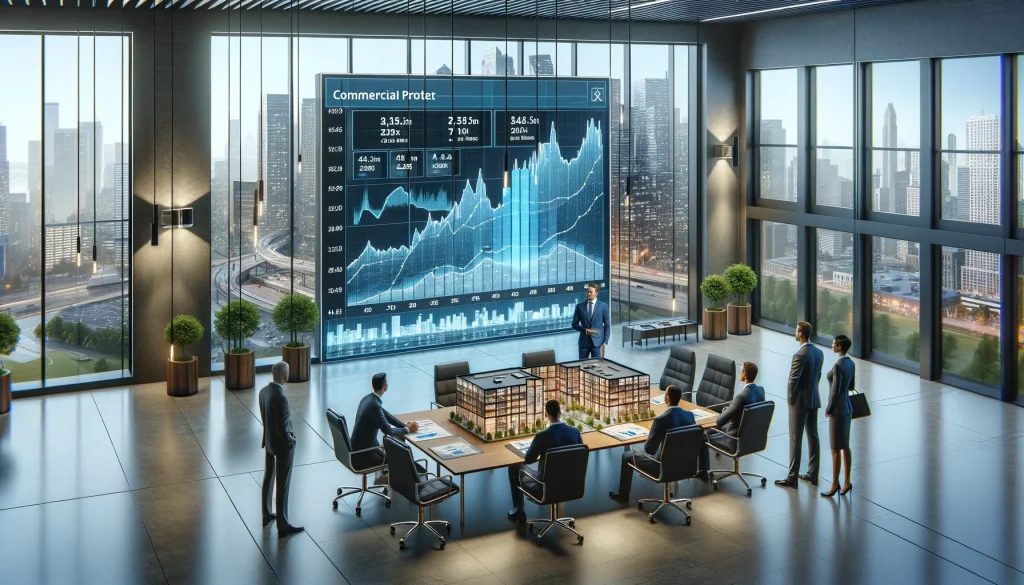The commercial real estate market in the United States has experienced significant upheaval in the wake of the COVID-19 pandemic. As businesses shuttered due to health mandates and remote work became the norm, office spaces and retail properties suffered a dramatic decline in demand, reshaping the industry landscape. This immediate impact forced stakeholders to rethink their strategies, making recovery pivotal for the broader economic stability of the country.
With life cautiously returning to normalcy, the commercial real estate sector is seeing promising developments. The easing of restrictions and the ensuing economic activities have provided a much-needed boost in confidence, stirring a partial revival of interest in commercial spaces. Yet, challenges such as adapting to hybrid work models and evolving consumer behaviors continue to test the resilience of traditional business districts.
Current trends in the commercial real estate market

Among the evolving trends in the commercial real estate market, the resurgence in the use of office spaces is noteworthy. While many companies have embraced a hybrid work model, necessitating flexibility, the demand for collaborative and technologically enhanced office environments is on the rise. This shift highlights a growing preference for spaces that foster innovation and community, making it a critical consideration for property developers and landlords focusing on workspace designs that align with new working paradigms.
Moreover, the retail sector is experiencing an intriguing transformation where physical stores complement online presences. Localized retail spaces that offer unique in-person experiences are gaining traction, indicating a shift from traditional shopping to experiential consumption. Alongside, the industrial sector, particularly logistics and warehousing, is experiencing rapid expansion driven by the e-commerce boom.
Multi-functional and sustainable properties are also drawing significant interest as investors and developers seek to future-proof their assets against shifting consumer and regulatory demands. These properties cater to diverse needs such as residential use, retail, and recreational spaces within a single development, enhancing their attractiveness to a wider audience.
Regions with leading recovery
Certain regions in the United States are spearheading the resurgence of the commercial real estate market through strategic recoveries. Metropolitan areas such as Austin, Nashville, and Miami are receiving considerable attention due to their thriving business environments and attractive tax incentives. These locales are not only attracting new residents and companies looking for favorable business climates but also spurring significant new construction projects to accommodate this influx.
Investments in these regions showcase a reinvigorated interest in developing infrastructure and commercial spaces conducive to modern business needs and lifestyle aspirations. Besides the obvious economic benefits, they also reflect a strategic repositioning to cater to the demographic shifts and preferences that the pandemic has accelerated.
The resulting landscape is one where urban centers blend with suburban comfort, offering a balance of amenities and business opportunities. These dynamics are progressively reshaping the geography of the commercial real estate market, highlighting a shift in how and where businesses choose to operate post-pandemic. As a consequence, understanding these trends and regions becomes indispensable for investors and companies aiming to maximize returns in an ever-evolving economic climate.
The role of investors in market recovery
Investors play a crucial role in the gradual recovery of the commercial real estate market, drawn by the increasing recognition of properties as lucrative, long-term assets. Amidst these changes, there’s a noticeable escalation in investments across pivotal sectors such as logistics and multi-family residential properties. Their investments are fueling growth in diverse areas, underlining the importance of diversifying portfolios to include both high-yield and stable, long-term options.
A strategic infusion of capital into commercial properties is helping revitalize urban centers and smaller towns alike, catalyzing economic activity in areas poised for growth. Besides, investors are increasingly keen on sustainable projects that align with environmental goals, recognizing the potential for higher returns through innovative and responsible developments.
Key sectors attracting investment include technology-driven real estate solutions and renewable energy projects within commercial properties. They highlight a significant pivot towards smart buildings and eco-conscious designs, building on the broader shift towards sustainability and digital transformations. This approach not only enhances property values but also aligns with a global transition towards sustainable living and working arrangements, making these investments viable in the long run.
Future perspectives in the commercial real estate market
Looking ahead, the commercial real estate market presents robust growth opportunities alongside certain challenges. Economic projections suggest a gradual increment in demand for commercial properties, contingent upon the overall economic health and supportive fiscal policies. As interest rates fluctuate and government policies evolve, the industry must remain vigilant and adaptive, anticipating shifts that could significantly impact the market dynamics in the coming years.
Technological innovations will likely continue to play a transformative role, influencing property management and enhancing value propositions for tenants and investors alike. Smart technologies, from building automation to data-driven facility management, are setting new standards for operational efficiency, cost savings, and tenant satisfaction.
In conclusion, the commercial real estate market, while recovering from pandemic-induced disruptions, presents a landscape replete with lucrative opportunities and emerging challenges. By aligning strategies with consumer behavior, technological advancements, and sustainability goals, the industry can position itself advantageously for future growth.
